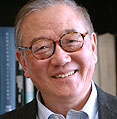 Dr. David T. Shaw
Dr. David T. Shaw David T. Shaw, an internationally respected electrical engineer with broad research commitments in aerosol, nanotechnology, high temperature superconductivity, and k -16 educations, is currently Professor of Electrical Engineering and Director of the Center for Innovation in Engineering Learning. He has served as a visiting associate with Prof. Shelton Friedlander at the California Institute of Technology, a visiting scientist at the Centre de Recherche de Fontenay-aux-Roses (France), and a visiting professor at the University of Paris VI: Pierre et Marie Curie (France) and the Université de Provence – Aix Marseille (France).
Shaw was the organizer and founding president of the American Association for aerosol Research (AAAR) and the founding co-editor-in-chief of its affiliated publication the journal of Aerosol Science and Technology. He was instrumental in the formation of the International Aerosol Research Assembly (IARA) during his AAAR presidency. Committed in his effort to promote international cooperation in environmental and health-related aerosol research, Shaw believes that the researchers all around the world need to work together for the solution of many complex global nanoparticle-related problems in such areas as environment, health and energy. Earlier in his career, he represented the U.S. in the discussions of many official international cooperative agreements, including the nuclear space power programs with the International Atomic Energy Agency (IAEA) and the former Soviet Union, as well as the high temperature superconductivity program with the Science and Technology Agency of Japan.
Shaw is also noted as the executive director of the New York State Institute of Superconductivity, a large research consortium of university and industrial research projects dedicated to the commercialization of high temperature superconductors (HTS). The Institute contributed many of the innovative research and development in the field, including the first yttrium-based HTS thin film processed by laser -ablation technique, the demonstration of the deposition of HTS films on metallic substrates (stainless steel), the processing of kilometer – length bismuth – based HTS wires, etc. Under his leadership, three national workshops were organized on new research opportunities and challenges in superconductivity. The workshop reports provided invaluable information for planning of research programs in the HTS community between 1991 and 1997.
In recent years, Shaw is spending his considerable energy on k-14 technology education. He believes that mastery technological literacy is an essential requirement for all people who live in the increasingly technology-driven Information Age. Working with groups of highly regarded educators from several universities, creative k-14 technology education leaders, and industrial multimedia designers, he has demonstrated the effectiveness of interactive web-based instructional materials for high school and community college students. Using an informed design cycle, he emphasizes the importance of cooperative and hands-on problem solving based on just-in-time multimedia web-based learning.
Internationally recognized for his work in the fields of nanoparticle research, Shaw was appointed to a National Science Foundation panel that assessed the global R & D status in nanoscale science and technology. The panel’s report, Nanostructure Science and Technology, was the technical document used as the basis for the National Nanotechnology Initiative announced by President Clinton in January 2000.
